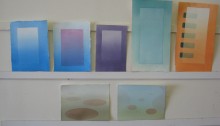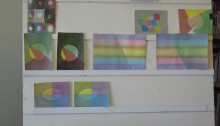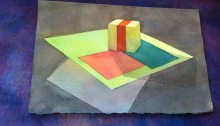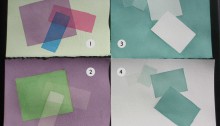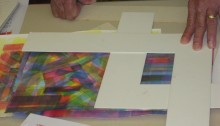Tri-hue watercolor class, week 6: gradation critique; surfaces
Class started with Dick talking us through, and demonstrating, how he builds a painting as “a conversation,” responding to what he sees, unifying disjointed areas of color, “addressing issues” of unresolved [too raw; primary or secondary] color, and choosing what to leave and what to emphasize. He explores and experiments and asks, “What if?” because…
